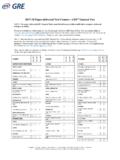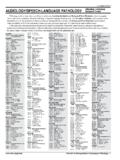Transcription of CHILD PHYSICAL ABUSE - nationalchildrensalliance.org
1 National Children s Alliance CHILD PHYSICAL ABUSE : A Guide to the CAC Response | 1 CHILD PHYSICAL ABUSEA Guide to the CAC ResponseDEVELOPING CAPACITY TOWARD SERVING CHILD PHYSICAL ABUSE VICTIMS1 MEETING THE MENTAL HEALTH NEEDS OF PHYSICAL ABUSE VICTIMS2 MEDICAL EVALUATION FOR CHILD PHYSICAL ABUSE CASES3 ADVOCACY FOR PHYSICAL ABUSE VICTIMS4 Table of ContentsContributorsThe CAC Response to CHILD PHYSICAL AbuseAbout This Guide1: Developing Capacity toward Serving CHILD PHYSICAL ABUSE Victims2: Meeting the Mental Health Needs of PHYSICAL ABUSE Victims3: Medical Evaluation for CHILD PHYSICAL ABUSE Cases4: Advocacy for PHYSICAL ABUSE Victims0304 04051421352 | National Children s Alliance CHILD PHYSICAL ABUSE : A Guide to the CAC ResponseContributorsDr.
2 Karen Farst Co-Chair University of arkansas for Medical SciencesIvy Svoboda Co-Chair Nebraska Alliance of CHILD Advocacy CentersCari Allen Children s Advocacy Center of Jackson CountySue Ascione Northeast Regional CACC aitlyn Benedetto CHILD Enrichment, Bass Harmony House CAC & SACS helly Bohannon The Bridge Children s Advocacy CenterColleen Brazil Project HarmonyMary-Ann Burkhart Association of Prosecuting Attorneys, CHILD ABUSE Prosecution ProjectEllen Case Mayo Children s Advocacy CenterDawn Cazzolli Wayne County Children s Advocacy CenterJackie Collard CHILD Advocacy Center of NiagaraBeth Cook Logan Co. CHILD Advocacy CenterBethany Cottrell Merrimack County Advocacy CenterStephanie Davis Greater Richmond SCAN CACK imberly Duffy York County Children s Advocacy CenterAshley Ellis Heartford HouseSuzan Evans Children s Advocacy Centers of North CarolinaJanet Fine National Vicarious Trauma Toolkit ProjectJustin Fitzsimmons SEARCH, The National Consortium for Justice and StatisticsBrenda George Children s Alliance of MontanaPaige Gilliland AWAKE Children s Advocacy CenterJennifer Ginsburg Safe Harbor CACV icky Gwiasda Western Regional CACK aren Hangartner Southern Regional CACDr.
3 Karen Hansen Department of Pediatrics, University of Utah Health Sciences CenterDebra Hawkins Harmony House, Hawthorne Children s Advocacy Center of Pierce County, WashingtonKaren Hill Southern Tier CHILD Advocacy CenterDr. Mark Hudson MRCAC/ Midwest Children s Resource CenterRachel Johnson First Witness CACS handi Joubert-Kanz The CHILD Center, Kaplan Delaware County Children s Advocacy CenterMargot Kubichek Randall Tucker CACS tacie LeBlanc New Orleans CAC and Louisiana Alliance of CACsTori Little Nashville Children s AllianceMisty Marinier CHILD Advocacy Center of McHenry CountyNydia Monagas New Jersey Children s AllianceDonna Moulton CHILD Help ArizonaWendy Myers The CRICKET CenterGwen O Brien Synergy CACE mily Perry Susie s Place CHILD Advocacy CenterDiane Pisczek Lake Sumter Children s Advocacy CenterBrandy Rea East Mississippi CHILD Advocacy CenterCindy Riddell Sunflower House4 Carole Swiecicki Dee Norton Lowcountry Children s CenterAlyssa Todd Windham County Safe Place CACAnn Marie Tucker CHILD Advocacy Center of NiagaraNatalie Whitehead Appalachian
4 Children s CenterTiffany Webb SafePath Children s Advocacy CenterLeanda Welker Harford County Children s Advocacy CenterJoyce Wientzen Cumberland County Children s Advocacy CenterNational Children s Alliance CHILD PHYSICAL ABUSE : A Guide to the CAC Response | 3 The CAC Response to CHILD PHYSICAL AbuseDespite the fact that CACs serve many more victims of CHILD sexual ABUSE than they do victims of CHILD PHYSICAL ABUSE (CPA), federal data show that PHYSICAL ABUSE is far more common, potentially indicating that CACs without a specialized response to PHYSICAL ABUSE may be unequipped to serve a large population of CHILD victims of ABUSE within their jurisdictions. The CAC model is appropriate for providing evidence-based services to CHILD victims of PHYSICAL ABUSE when the CAC and partnering MDT members have the necessary capacity and resources to do so.
5 PHYSICAL ABUSE cases often benefit not only from specialized mental health treatments, but also require special considerations for medical services, victim advocacy, forensic interviewing, and MDT collaboration. This guide identifies numerous considerations and differences in the response and intervention to PHYSICAL ABUSE for a CAC currently serving sexually abused children and their families. About This GuideAs part of ongoing work to develop helpful tools and guidance to improve CAC service delivery to children and families, National Children s Alliance (NCA) convened a collaborative workgroup on the subject of expanding CAC delivery of evidence-based services to victims of PHYSICAL ABUSE . This group, comprising professionals representing all of the disciplines required within the multidisciplinary team (MDT) disciplines under NCA s Standards for Accredited Members, worked to develop the following information and resources that will provide guidelines and recommendations both for CACs currently providing services to victims of PHYSICAL ABUSE , or those who are considering expanding or enhancing their services for this population.
6 The objective of this guide is to increase the number of CACs delivering evidence-based intervention designed to meet the specific needs of PHYSICAL ABUSE victims. In this guide, CAC directors, staff, boards, and MDT partners will find considerations, tips and resources for CACs and MDTs providing services to CHILD victims of PHYSICAL ABUSE to help them meet this objective at their individual CACs. The content is divided into four sections: One on developing capacity to serve CPA victims; the second on meeting the mental health needs of the victims; the third, covering considerations for medical providers, and the fourth and final on the role of the victim advocate in CPA cases. While each section covers a distinct discipline necessary to serve CPA victims, all sections are intended to be read by the entire complement of MDT members and CAC leadership.
7 Integral to the success of the CAC and MDT response to PHYSICAL ABUSE is the deep, interdisciplinary understanding of the role of each provider among every member of the | National Children s Alliance CHILD PHYSICAL ABUSE : A Guide to the CAC ResponseDeveloping Capacity toward Serving CHILD PHYSICAL ABUSE Victims1 National Children s Alliance CHILD PHYSICAL ABUSE : A Guide to the CAC Response | 51 Developing Capacity toward Serving CHILD PHYSICAL ABUSE VictimsGetting StartedBefore a CAC decides to offer or expand their services to victims of PHYSICAL ABUSE , the CAC should assess the need of the community, evaluate their available resources, and determine the capacity of their multidisciplinary teams to respond are some steps a CAC should take to begin the process of adding PHYSICAL ABUSE response and services at the CAC.
8 Every state has differing statutes and mandates defining CHILD ABUSE and directing the response to allegations. Check your state laws and local regulations to determine how existing mandates will impact CAC involvement. Explore how each of your MDT partners define and or categorize their agency response to PHYSICAL ABUSE . Determine the number/proportion of PHYSICAL ABUSE cases within your community. Map out the existing process for the response and intervention in reported cases of PHYSICAL ABUSE cases. Determine what the agreed upon case acceptance criteria would be for providing these services at the CAC. Determine how the CAC will work with PHYSICAL ABUSE cases involving non-verbal children and children who may be non-accessible, such as those in the hospital where there may be a delay in interview.
9 Assess the community wide training needs that would be required to effectively accomplish the expansion of CAC | National Children s Alliance CHILD PHYSICAL ABUSE : A Guide to the CAC Response1 Developing Capacity toward Serving CHILD PHYSICAL ABUSE VictimsExpanding Service to CHILD PHYSICAL ABUSE Victims for MDTsBefore a CAC makes the decision to expand services to include CHILD PHYSICAL ABUSE victims, it is important to determine both the current and needed capacity for all team members and partner agencies involved in the response and provision of services. At minimum, this would include law enforcement, victim advocacy, CHILD protective services, prosecution, medical providers, mental health providers, and forensic in these discussions are: the team s agreement to the number of additional cases they can manage; the available knowledge and expertise specific to CHILD PHYSICAL ABUSE and how that training will be provided to all team members; a clear definition and agreement of cases that will be included in the CAC case acceptance criteria.
10 And established protocols for any additional services that will be available for caregivers of children who are victims of PHYSICAL MDT Role in CHILD PHYSICAL ABUSE CasesThe MDT should work together with the CAC to develop an agreed-upon case acceptance criteria that will determine which PHYSICAL ABUSE cases will be referred to the CAC. This criteria should be included in the CAC team may encounter challenges determining an acceptance criteria that defines PHYSICAL ABUSE conducive to the parameters of each involved discipline. For example, CHILD protective service agencies may have differing mandates and procedures from those of law enforcement agencies. It will be necessary to review the related state laws and local regulations and work collaboratively to define what referrals are appropriate for the CAC to receive.



